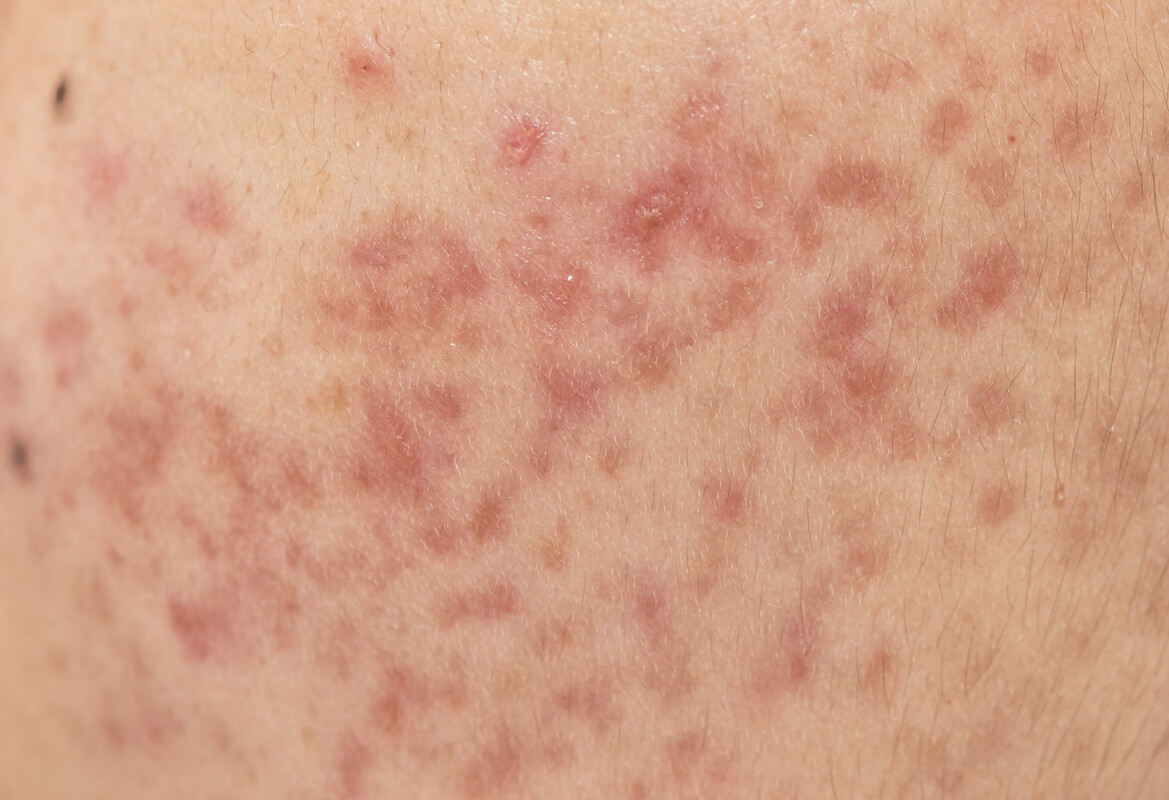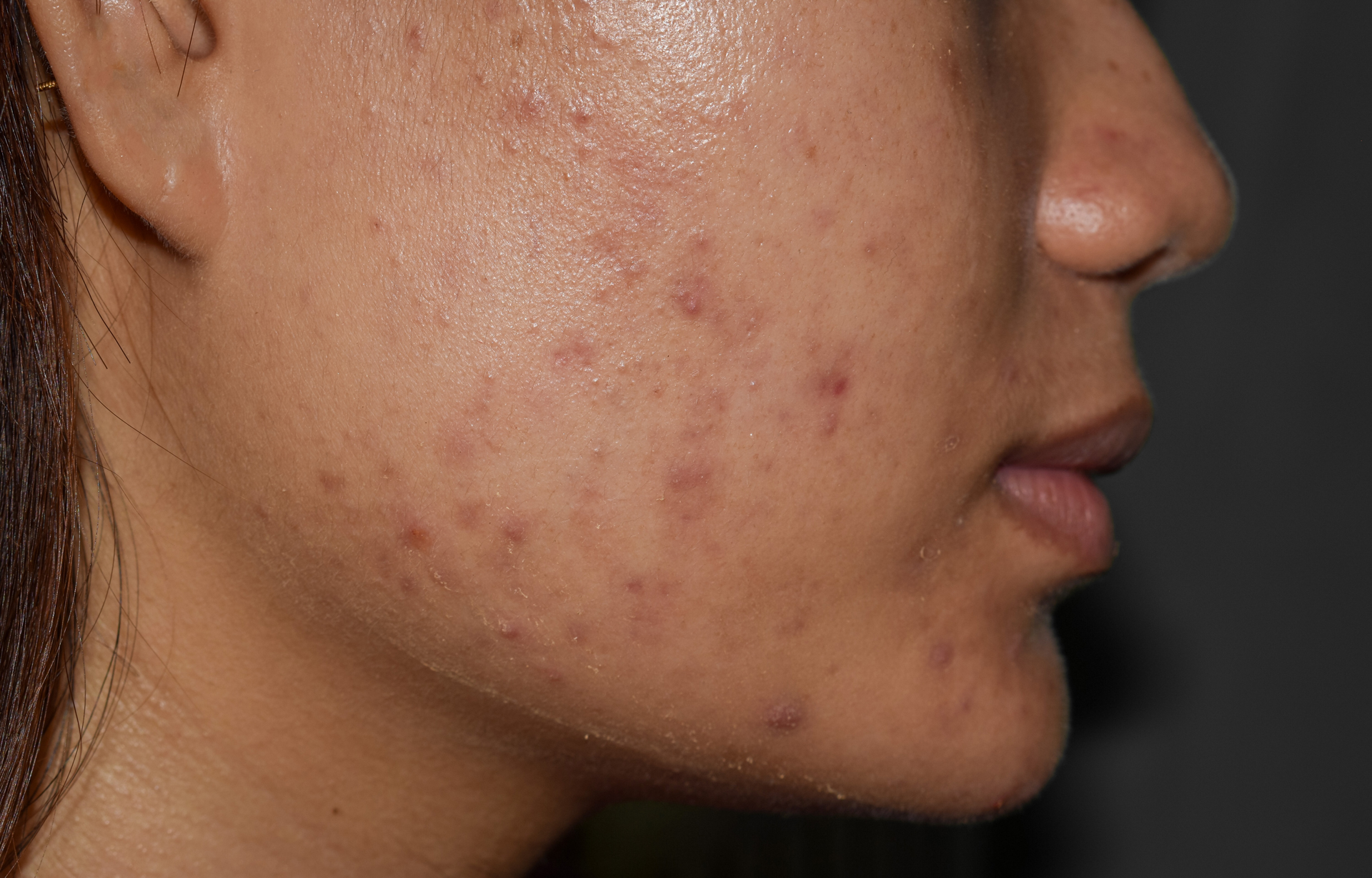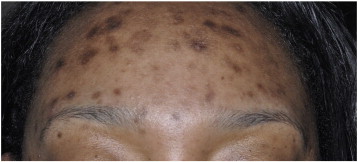Post-Inflammatory Erythema
& Post-Inflammatory Hyperpigmentation
What is PIE and PIH?
PIE (Post-Inflammatory Erythema) and PIH (Post-Inflammatory Hyperpigmentation) are both terms used to describe different types of skin discoloration that can occur after inflammation or injury to the skin. However, they have distinct characteristics and require different approaches for treatment.
Post-Inflammatory Erythema (PIE): PIE refers to reddish or pinkish marks left on the skin after an inflammatory event, such as acne breakouts, rosacea flare-ups, or other skin traumas. These marks are caused by the dilation of blood vessels in the affected area. PIE is more common in fair-skinned individuals and tends to fade over time, although it can take several months to years. Unlike PIH, PIE does not involve an increase in melanin (skin pigment) production.
Post-Inflammatory Hyperpigmentation (PIH): PIH refers to darker patches of skin that develop after an inflammatory event, such as acne, eczema, insect bites, or skin injuries. It occurs due to an overproduction of melanin in response to skin inflammation or trauma. PIH can vary in colour, ranging from light brown to dark brown. It’s more common in individuals with more melanin-rich skin tones and can take several months to fade.
HOW WILL I KNOW IF I HAVE PIE OR PIH?
Distinguishing between Post-Inflammatory Erythema (PIE) and Post-Inflammatory Hyperpigmentation (PIH) can sometimes be challenging, as their appearance can overlap. However, there are some characteristics that can help you differentiate between the two:
Post-Inflammatory Erythema (PIE):
- Color: PIE typically appears as red or pinkish marks on the skin, often resembling flat or slightly raised patches.
- Appearance: These marks are caused by the dilation of blood vessels in the skin and may blanch (turn paler) when pressure is applied.
- Causes: PIE is commonly associated with inflammatory events like acne breakouts, rosacea flare-ups, or skin traumas.
- Skin Type: It’s more common in individuals with fair skin tones.
- Fade Over Time: PIE tends to fade naturally over time as the blood vessels heal and the inflammation subsides. It can take several months to a couple of years to fully disappear.
Post-Inflammatory Hyperpigmentation (PIH):
- Color: PIH appears as darker patches of skin, ranging from light brown to dark brown or black. The color may be consistent across the area.
- Appearance: Unlike PIE, PIH marks don’t blanch when pressure is applied. They’re a result of increased melanin production in response to inflammation.
- Causes: PIH is commonly associated with various inflammatory events, including acne, eczema, insect bites, or skin injuries.
- Skin Type: PIH is more prevalent in individuals with more melanin-rich skin tones.
- Fade Over Time: PIH can take several months to years to fade naturally. Treatments can help speed up the fading process.
WHAT TREATMENTS CAN TREAT PIE AND PIH?
We offer many treatments available to treat PIE and PIH, the treatment route chosen is unique to each individual, which is why a consultation is so important!
Microneedling: Microneedling is a procedure that involves using fine needles to create controlled micro-injuries in the skin. This process stimulates collagen production and encourages skin renewal. For PIE, microneedling can help improve skin texture, reduce redness, and promote a more even skin tone. The controlled injury triggers the skin’s natural healing response, which may gradually diminish the appearance of red or pink marks associated with PIE. It can also aid in improving the overall appearance of PIH by promoting the turnover of pigmented cells.
Retinol-Based Peels: Retinol-based peels, which contain derivatives of vitamin A, are chemical peels that exfoliate the top layer of the skin. These peels promote cellular turnover and help fade hyperpigmented areas. For PIH, retinol-based peels can aid in reducing the appearance of dark spots by encouraging the shedding of pigmented skin cells and promoting the growth of new, healthy skin cells. These peels can also contribute to an overall improvement in skin texture and tone.
IPL Treatments: Intense Pulsed Light (IPL) treatments utilise different wavelengths of light to target specific pigments in the skin. For both PIE and PIH, IPL treatments can be effective. For PIE, IPL can help reduce redness by targeting the blood vessels responsible for the discolouration. For PIH, IPL can target excess melanin in darker spots, helping to fade the pigmentation and create a more even skin tone. Multiple sessions may be needed to achieve optimal results, but please note that IPL isn’t suitable for all skin tones, but this can be discussed in consultation.
It’s important to note that the effectiveness of these treatments can vary from person to person, and a professional assessment by a skin specialist is crucial to determine the most suitable approach for your specific skin type and condition. These treatments should also be performed by trained professionals to ensure safety and proper technique. Additionally, sun protection and diligent skincare are essential to maintain the results and prevent further damage.
Ready to begin your journey?
To learn more in depth about your skin, get started with a consultation.
Want to know the tea?



